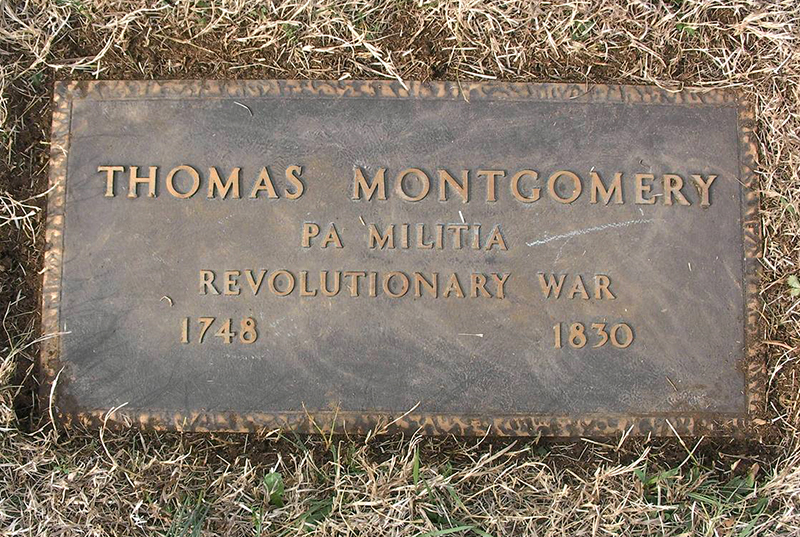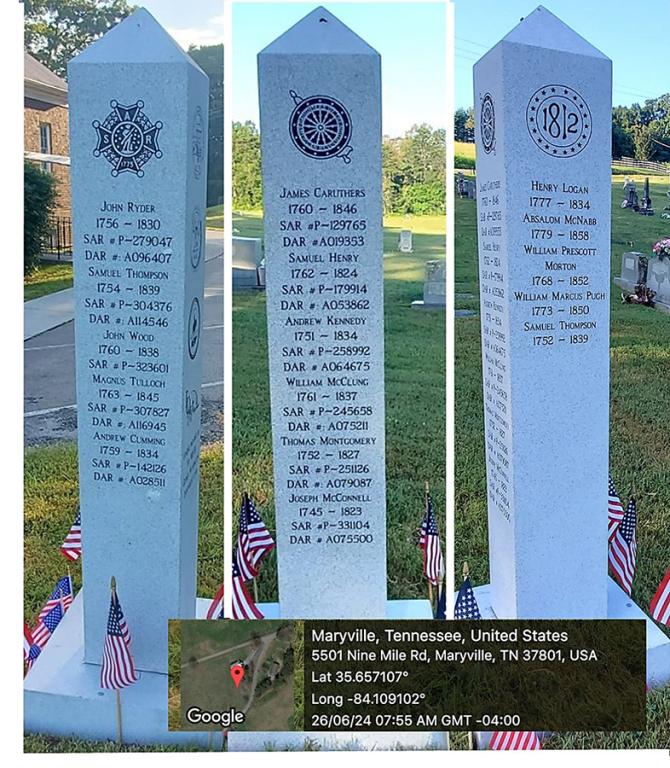Thomas MONTGOMERY
SAR Patriot #:
P-251126
The following information was assembled from numerous sources and cannot be used directly as proof of Qualifying Service or Lineage.
It is considered a research aid and is intended to assist in locating sources that can be used as proof.
State of Service: PA
Qualifying Service: Private
DAR #: A079087
Birth: 17 Jul 1752 / / Scotland
Death: 18 Jun 1827 / Blount / TN
Qualifying Service Description:
- Served under Captain James Scott's Company, Third Battalion, Washington County, Pennsylavania Militia
- 1782-1785 served under Lieutenant-Colonel David Williamson in an expedition.
Additional References:
- Montgomery, Thomas Lynch, Pennsylvania Archives Sixth Series, Volume II, Pennsylvania. Harrisburg: Harrisburg Publishing Company, 1906, pg 91-92, 105
- Located graves of soldiers and patriots; 1974-75, 75-76, 76-77. DAR Magazine
Spouse: Mary Patton
Children: William; Samuel;
Members Who Share This Ancestor
| Date Approved | Society | ACN | SAR Member Info | Lineage via Child | View Application Detail | |
|---|---|---|---|---|---|---|
| 1971-12-13 | PA | Unassigned | Bruce Lippincott Reline (102459) | Samuel | ||
| 2005-01-25 | TX | 21066 | Michael Joseph Everheart (152239) | William |
Location:
/ Blount / TN / USA
Find A Grave Cemetery #:
Marker Type:
SAR monument;
SAR Grave Dedication Date:
22 Jun 2024
Comments:
- 6 ft SAR Obilisk with all Revolutionary War Patriots honored is at 35.657107°, -84.109102°
- Flat V/A stone
- Photo credit: Joel Davenport National #209956
Directions to Cemetery / Gravesite:

